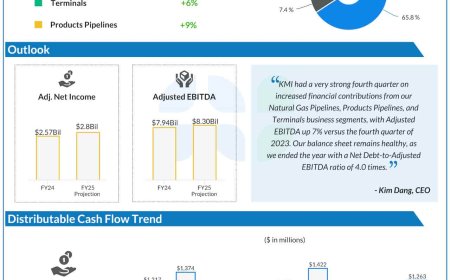How to Integrate Regulatory Compliance into Growth Plans
Companies need to have a balance of growth and compliance. Growth involves innovation and scale, but lack of compliance will have very dangerous consequences: fines and lawsuits, not to mention the loss of reputation. In this regard, it is not just prudent to have compliance as part of the growth strategy but also necessary for […] The post How to Integrate Regulatory Compliance into Growth Plans appeared first on Insights Success.

Companies need to have a balance of growth and compliance. Growth involves innovation and scale, but lack of compliance will have very dangerous consequences: fines and lawsuits, not to mention the loss of reputation. In this regard, it is not just prudent to have compliance as part of the growth strategy but also necessary for sustainable success.
Understanding Regulatory Compliance
Regulatory compliance is the implementation of laws, regulations, or directives that apply to a given firm. This can be within quite a number of parameters and levels, such as financial standards, environment regulation, data protection, and labor laws, all of which ensure legal performance by the firm involved to avoid any risk of causing litigation and, therefore, there is trust with their clients, partners, or stakeholder.
Why Compliance is Important in Growth
As businesses grow, they tend to look for new markets, develop new products, or extend their operations. Each of these steps may require a whole range of regulatory requirements. For example, entering a new geographic market may require knowledge of local laws and regulations, whereas introducing a new product might require adherence to industry-specific standards.
Integration into growth plans would not always come cheap if done, and failure would be painful. Companies will have costs or even litigations that bring business operations and use resources available to organizations to the ground. In a way, then, compliance should not be considered something restrictive but as a base feature in strategizing.
Integration Steps in Growth Plan
Regulatory Assessment
This includes the need to be detailed in the review of any applicable regulations so that compliance fits within growth strategies. In other words, it refers to an informed identification of legal requirements that apply to business across its industry, location, and operational models. Referrals to professionals are good insights into obligation specifics, especially legal or compliance professionals.
Include Compliance Within Strategic Planning
Once the regulatory environment has been understood, compliance factors are supposed to be folded into strategic planning. It would thus ensure that every effort concerning growth should include some measures of compliance. As such, for instance, determining what the appropriate standard ought to be long before designing a new product is a step that is made long before that in cases where changes that will save future expense can occur.
Training and Awareness
Compliance should be trained on employees so that the process is effectively implemented within business activities. They should be regularly trained so that the compliance issue can be enlightened to all the members in the team of their individual responsibility. This leads to compliance culture since the employees are empowered to contribute meaningfully towards growth initiatives that are well-informed of the general regulatory landscape.
Develop Clear Policies and Procedures
Clear compliance policies and procedures should be formulated and implemented. These policies must define the steps that the employees must take to ensure compliance in all their daily activities. The policies can be reviewed periodically to keep them relevant and effective, especially with changes in regulations or new growth opportunities.
Monitoring and Reporting
Continuous monitoring of compliance is required. Businesses should develop systems which monitor regulatory changes and check for compliance metrics regularly. The process involves establishing reporting systems that allow employees to report their concerns to management over matters of compliance. Through such a system, companies would be able to identify the compliance challenges before they become big problems.
Risk Management
Another aspect of embedding compliance into growth plans is risk identification and mitigation. In this scenario, awareness of potential compliance risks with respect to new initiatives enables the business to devise strategies for exposure mitigation. The risk management framework must be periodically reviewed and updated to maintain its effectiveness as the business evolves.
Stakeholder Engagement
Compliance stakeholder engagement is crucial in areas such as the customers, investors, and the regulatory bodies. This can enhance the reputation of a company and increase trust in the stakeholders by communicating transparently on the compliance efforts that are in place. It also provides a company with chances to gather precious feedback that might inform future decisions.
Use Technology
Compliance in the digital age today can only be achieved through technology. There are many software solutions to help businesses track changes in regulatory environments, manage compliance audits, and streamline reporting processes. Thus, compliance technology investment can be not only an efficiency enhancer but also a competitive advantage in growth initiatives.
Benefits of Compliance-Driven Growth
There are several benefits of integration with growth plans. First and foremost, it saves companies from legal implications arising because of non-compliance. Finally, firms that have taken care for compliance enjoy higher operative performance since there is uncertainty with less complexity in any form of decision.
Compliance helps companies build reputation in the market. Markets require ethical businesses that respect the law. As such, customers will likely stick with such a firm and pull in more new customers who care about corporate behavior.
Conclusion
This is not just a defensive game; it is a proactive process toward long-term success. If companies understand regulations, embed compliance into strategic initiatives, educate employees, and utilize appropriate technologies, they will easily overcome the complexities of a rapidly changing regulatory landscape. In doing so, their business will be risk-minimized and positioned within an integrity culture that bodes well for long-term growth and success in today’s and tomorrow’s fast-paced market.
The post How to Integrate Regulatory Compliance into Growth Plans appeared first on Insights Success.











































